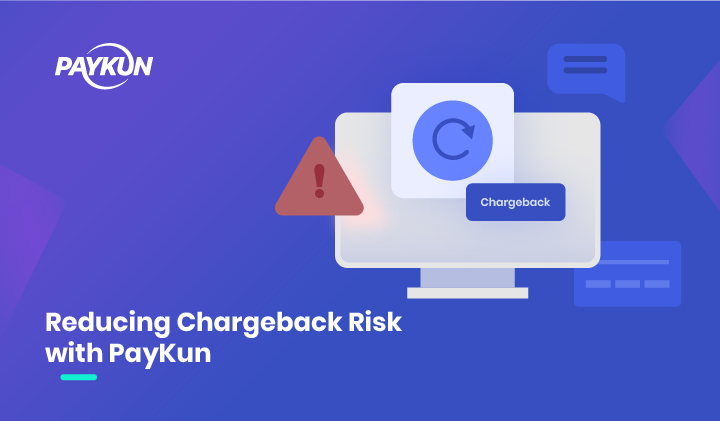Credit card chargebacks are a painful reality for eCommerce merchants. A chargeback is nothing but a reversal of a completed transaction. It happens when a customer disputes a charge on their credit card account and eventually receives their money back from the issuing bank.

Simply put, chargebacks are a grand loss to retailers’ bottom line, especially when it occurs consistently. As a retailer, you must consider the negative consequences of chargebacks and how they can impact the relationship with credit card processing companies. Not to mention how it impairs customers’ shopping experience.
PayKun, being a leading payment gateway in India can help merchants take care of chargebacks by bridging the gap between the acquirer and the merchant. Here is what you need to learn more about chargebacks and how they can be managed.
Why do chargebacks occur?
There could be more than one reason for chargeback against a single transaction when it comes to chargebacks. However, the most common reason attributed to chargebacks is unsatisfactory customer service or poor delivery experience. A chargeback can also be issued if products have not arrived as expected or the buyer regretting making a purchase.
Besides, a customer can also file a chargeback if they suspect fraudulent activities on their card.
Why should you avoid chargebacks?
As an eCommerce retailer, you do not want your reputation to go for a toss. The best way you can ensure your reputation is by avoiding chargebacks at all costs. If chargebacks are frequent, you may be at risk of being labeled as a high-risk business by banks and credit card processing companies.
How do you manage chargebacks?
Now that you know how chargeback can be detrimental to your business’s health, it is better that you have a case management system in place to deal with issues like chargebacks. During busy seasons, such as holidays, it is particularly important to ensure you have a dedicated team for handling and expediting disputes. In addition, by focusing on recuperating lost funds, you can make sure that there is no excessive fund loss from chargebacks.
How to minimize chargebacks?
Once a chargeback is issued, you, as a retailer, are responsible for responding to the notice. While the process may seem cumbersome, the following ways can help you reduce chargebacks.
- Buyer’s remorse is one of the primary reasons for chargebacks. Hence it is vital for eCommerce retailers to have a contact phone number on the site for customers to call. If a customer is not sure of the purchase, he or she may reach out to the customer support team to find out information on the purchase. If you are able to sort the out issue, there may be a chance of chargeback not being initiated.
- You must always ensure that you receive full authorization for an order. To avoid inappropriate authorization chargebacks (issued by banks), you should receive authorization for every package shipped out from the store.
- In the event of a chargeback being initiated, respond to it as soon as you can. This gesture is part of the overall customer service experience.
- If you receive a chargeback, take time to verify the customer’s address by calling the Voice Authorization Centre. Also, confirm the name of the customer on file, the address, and the contact number.
- Make it easy for customers to find the refund policy. If they find it easy to return an item, there will be zero risks of a chargeback being filed. Above all, it will add value to your customer service experience.
- eCommerce businesses should take it seriously and be honest about the products or goods they are selling online. Make sure that you clearly describe the products you are selling.
- Make sure you receive a signed proof of delivery for every package once they are shipped. Also, be sure to keep track of the number used for each package.
How PayKun helps you to resolve a chargeback?
Chargebacks are handled with the utmost attention. At PayKun, we follow the best process to resolve chargeback disputes.
- We send you an email or call notification if a chargeback is filed from the customer’s end.
- Once you receive the notification, take the time to review the transaction and let us know it. If the customer has not received the products, check the status of the same and let us know whether he or she is willing to accept the products anymore. Suppose the customer has already received the product. In that case, you need to share proof of deliveries, and invoices, and authorized details from the banks. After that, we will represent the dispute on your behalf.
Generally, banks provide a timeline of 7 working days to represent the dispute. If you fail to do the same within the specified time limit, the number of chargebacks will only increase.
Chargebacks are a costly nuisance. While chargebacks can be managed, it is vital for merchants to understand the ways chargebacks can happen and how they can do more harm than good. Thankfully, PayKun can help merchants reduce the number of chargebacks, benefiting the bottom line of their businesses and overall shopping experience for customers.
If you are all set to take charge of your online business with fewer chargebacks, sign up with PayKun now.

